Seven Fundamental Parts of a Scaffold
The components that make up scaffolding vary widely based on the type of building, project requirements, and surrounding conditions of the construction. However, there are some fundamental scaffolding parts that form the basic structure of any scaffold.
Continue reading to discover seven basic scaffolding parts.
Base Plates & Jacks
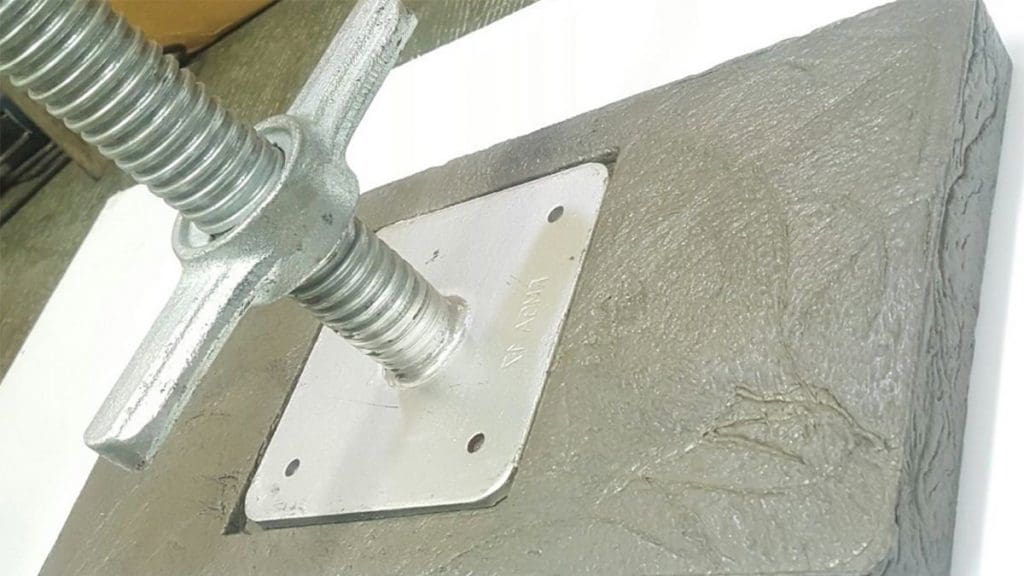
Base plates, also referred to as sole plates, are the load-bearing base of a scaffold.
They’re used to distribute weight and support the vertical scaffolding poles known as standards. Connecting the base plates to standards ensures a strong scaffolding foundation.
Base jacks are usually made out of steel and are adjustable to various lengths. The adjustments are made based on the amount of weight it needs to bear. They can also be made in a variety of configurations, such as swivels that adjust to sloped ground.
For scaffolds that are built off other structures like steel beams, base plates can be replaced with shoring heads (U-heads, for example).
Standards (Uprights, Verticals, Legs)
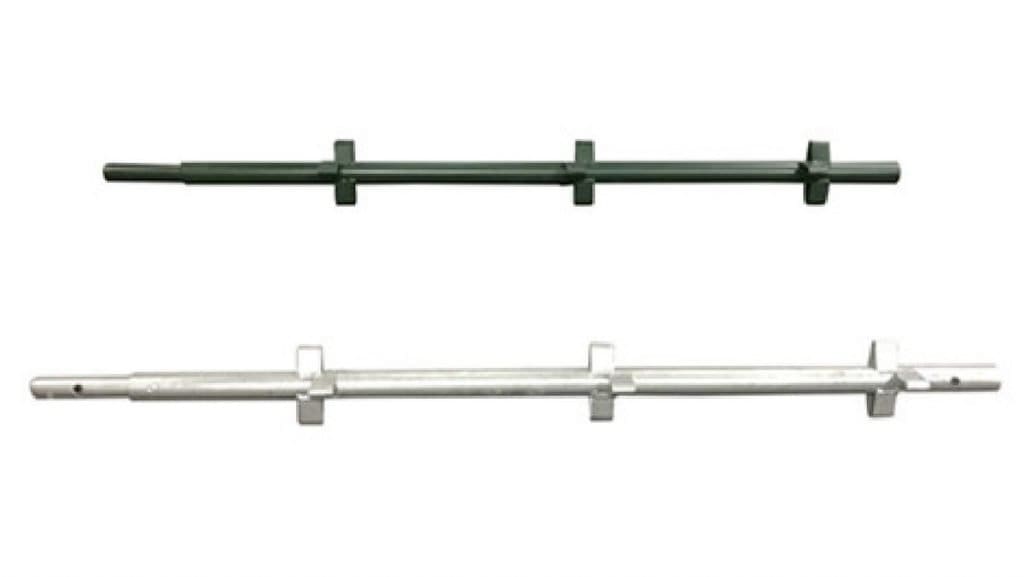
Standards, also known as uprights, verticals, or legs, are the long pipes or tubes that connect the whole scaffold to the ground.
Standards play a role in transferring the entire load of the scaffold to the ground. As mentioned above, they’re usually connected to base plates to ensure equal distribution of the load.
As standards are of fixed lengths, taller scaffolding requires that the pipes be connected so as to route the load directly through the structure. This is accomplished by using the ‘pin and socket’ joint, which twists to lock successive pipes together.
As standards are of fixed lengths, taller scaffolding requires that the pipes be connected so as to route the load directly through the structure. This is accomplished by using the ‘pin and socket’ joint, or a coupling pin, which twists to lock successive pipes together.
Standards are commonly made out of either painted steel, galvanized steel or aluminum, based on the requirements of the scaffold.

Ledgers (Runners)
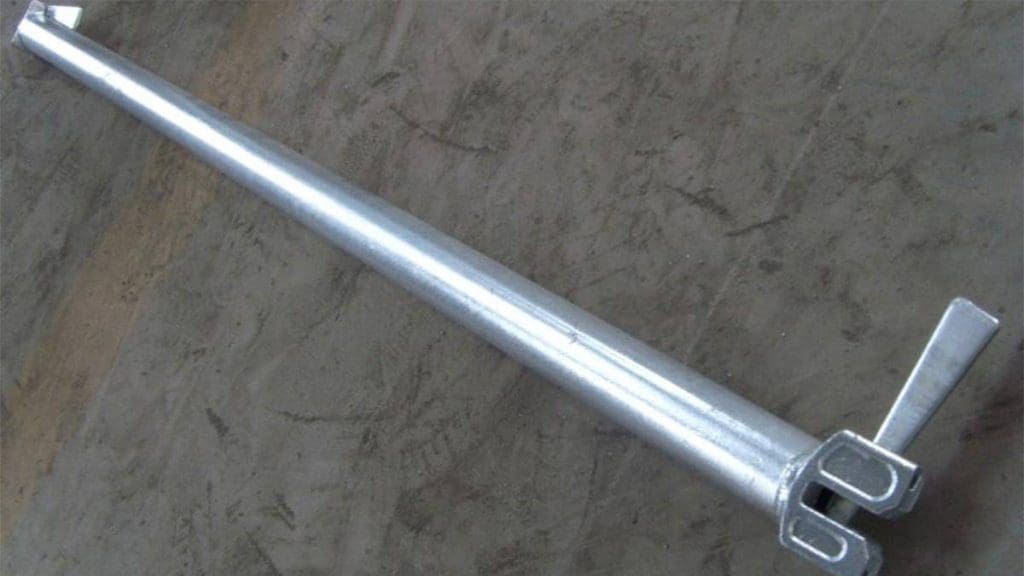
Also referred to as runners, ledgers are tubes that run horizontally along the length of the scaffold.
This component is used to support the working platform of the scaffold. Based on its placement, it determines the height at which the working planks (decks, boards) are staged.
Ledgers are placed in between each standard and structured parallel to the building’s wall. Multiple bays are connected with these ledgers both at the back and the front of the scaffold.
In some scaffolding systems, the same component fulfills both the ledger and transom function, in which case both may be referred to as ledgers.
The material used to create ledgers are either steel or aluminum.
Transoms (Bearers, Putlogs)
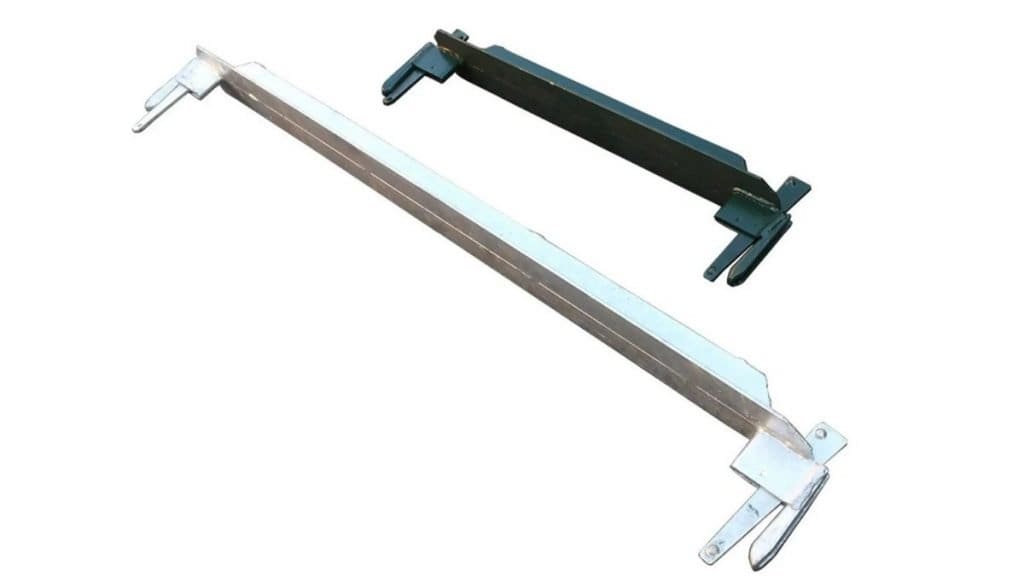
Transoms, or bearers, are horizontal members that meet the ledgers at right angles.
The role of a transom depends on the type. Main transoms provide support for the standards and the working platform by holding them in position. Meanwhile, intermediate transoms provide additional board support when placed at intervals between the main transoms. Another variant is putlogs, a type of transom with a flat end at one side, which is attached directly into the building wall to support working platforms.
The main transoms are positioned right next to the standards, while the intermediate transoms are attached to the ledgers in between the main transoms. Both of these components are made out of either steel, or aluminum.
Boards (Decks, Battens, Planks)
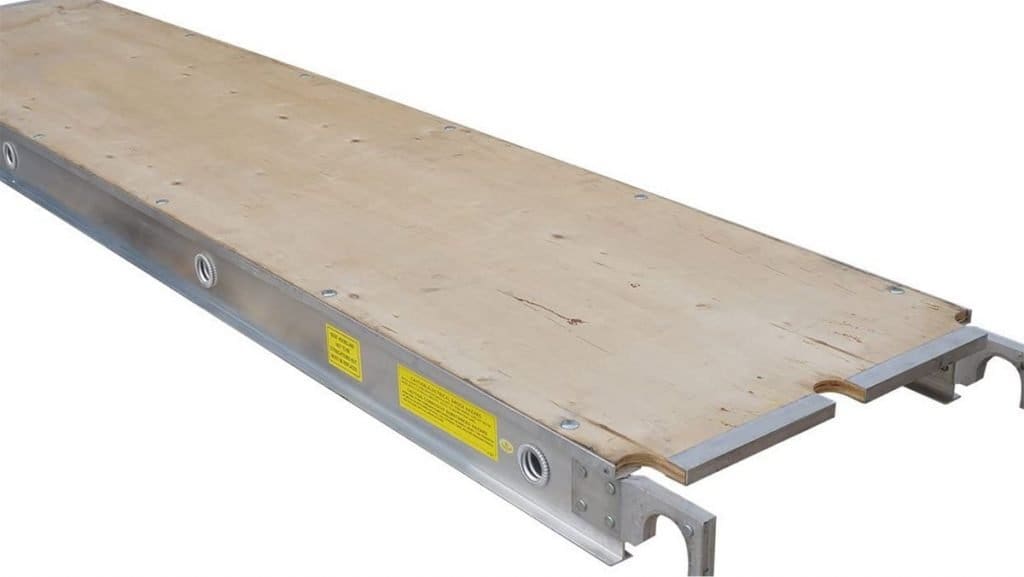
Boards, also known as decks or battens, are the planks that form the working platform on a scaffold.
They’re used as support for workers to stand on and place their tools when working on the scaffolding. Besides providing standing support, boards also ensure workers’ safety when working at tall heights.
Boards are available in wood, aluminum, aluminum frame with plywood board, or hot-dip galvanized steel materials. Accessories such as guardrails and toeboards can be added for security against falls.
Couplers (Clamps, Fittings, Clips)
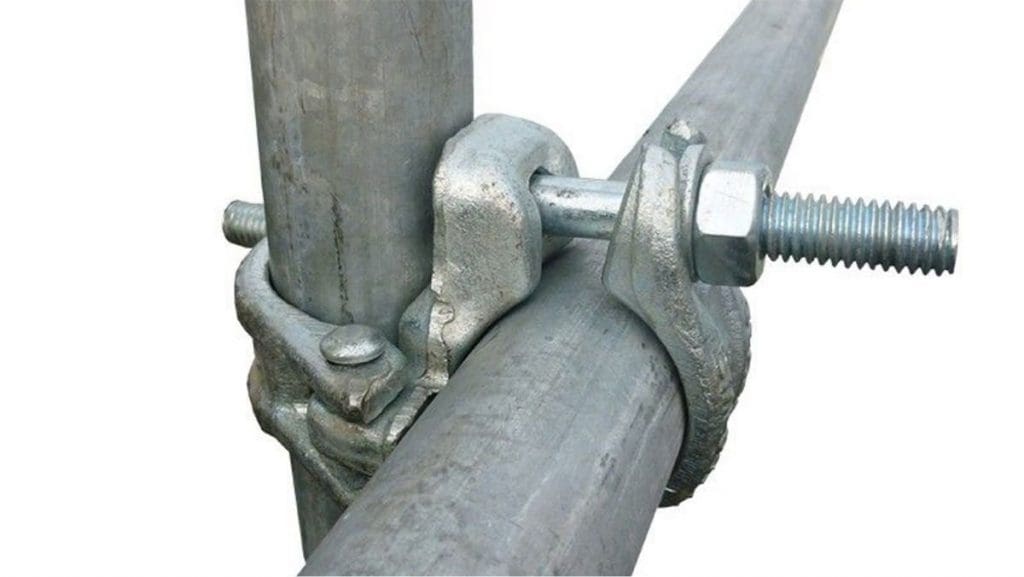
Couplers, also known as clamps, fittings or clips, are what hold components of a scaffold together. They’re different from a scaffolding tie, which is used to connect the scaffold itself to other structures.
Couplers are mainly used to help connect structural elements of a scaffolding. But detailed utilization comes in several variants – Putlog Couplers, Swivel Couplers, and Right Angle Couplers. Putlog Couplers are used to connect a ledger to a transom when the connection is needed to support the working board. Right Angle Couplers are used to connect a ledger or transom to a standard, while Swivel Couplers are recommended for any other angle of connection between scaffold tubes, such as diagonal bracing.
Couplers are usually made out of drop-forged steel or pressed steel for durability and reliability. Some have a hot-dip galvanized finish to avoid corrosion.
Couplers are used extensively in tube and coupler scaffolds, whereas systems scaffolding drastically reduces the need for couplers through the built-in connections between nodes on the verticals and connectors on the ends of horizontal members.
Braces
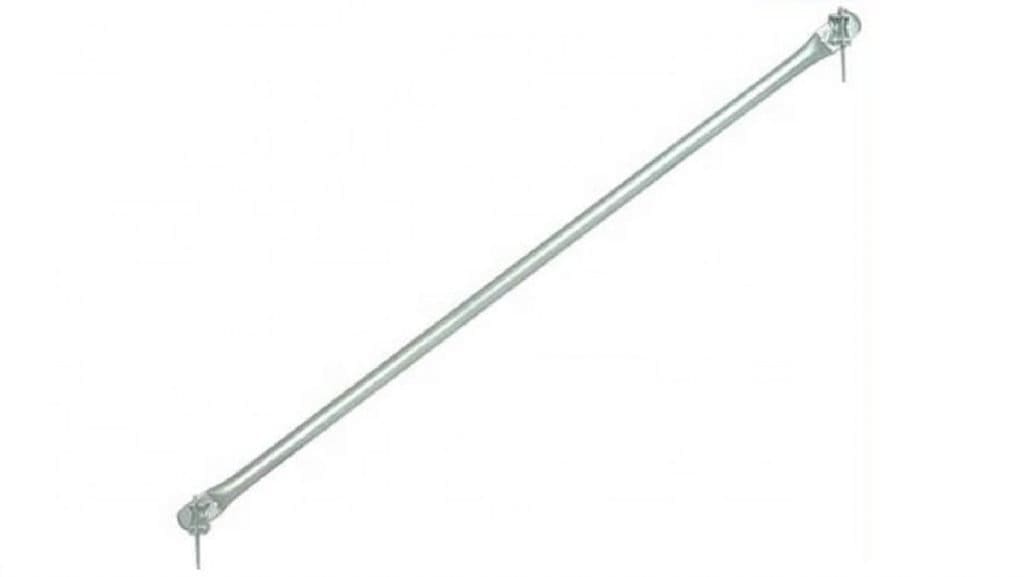
Braces are diagonal tubes that reinforce the scaffold’s rigidity.
Bracing provides strength by controlling the “unbraced length” of the scaffold leg. Besides that, it increases the scaffold’s stability by ensuring the scaffold leg doesn’t fall over.
There are several types of braces. Cross (transverse) braces run diagonally between ledgers and standards to increase a structure’s overall rigidity. Meanwhile, façade (longitudinal) braces are attached on the face of the scaffold, running diagonally along the length of the structure at every level. They help to prevent a structure from swaying. Braces are critical to keep scaffolds from twisting and ultimately collapsing due to loads as well as seismic, wind, and other external forces.
Braces are made from galvanized steel, an industry standard for heavy-duty support. In bamboo scaffolding, bamboo braces are used.